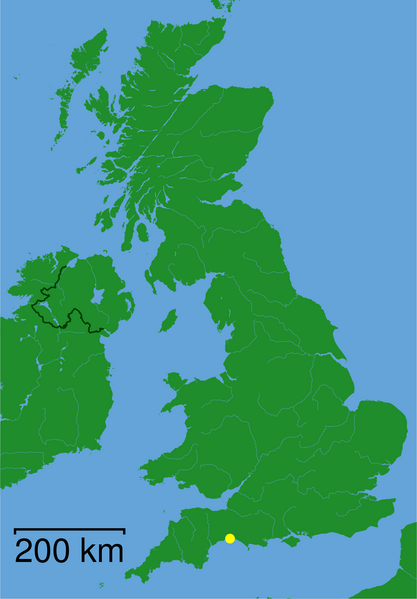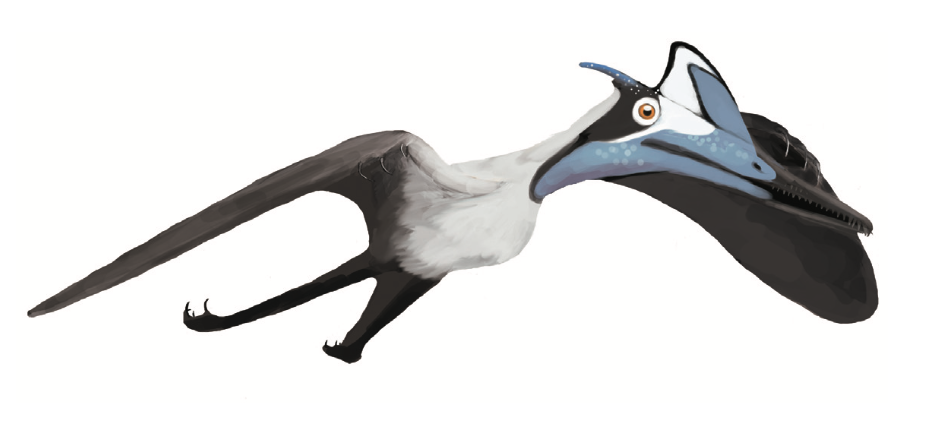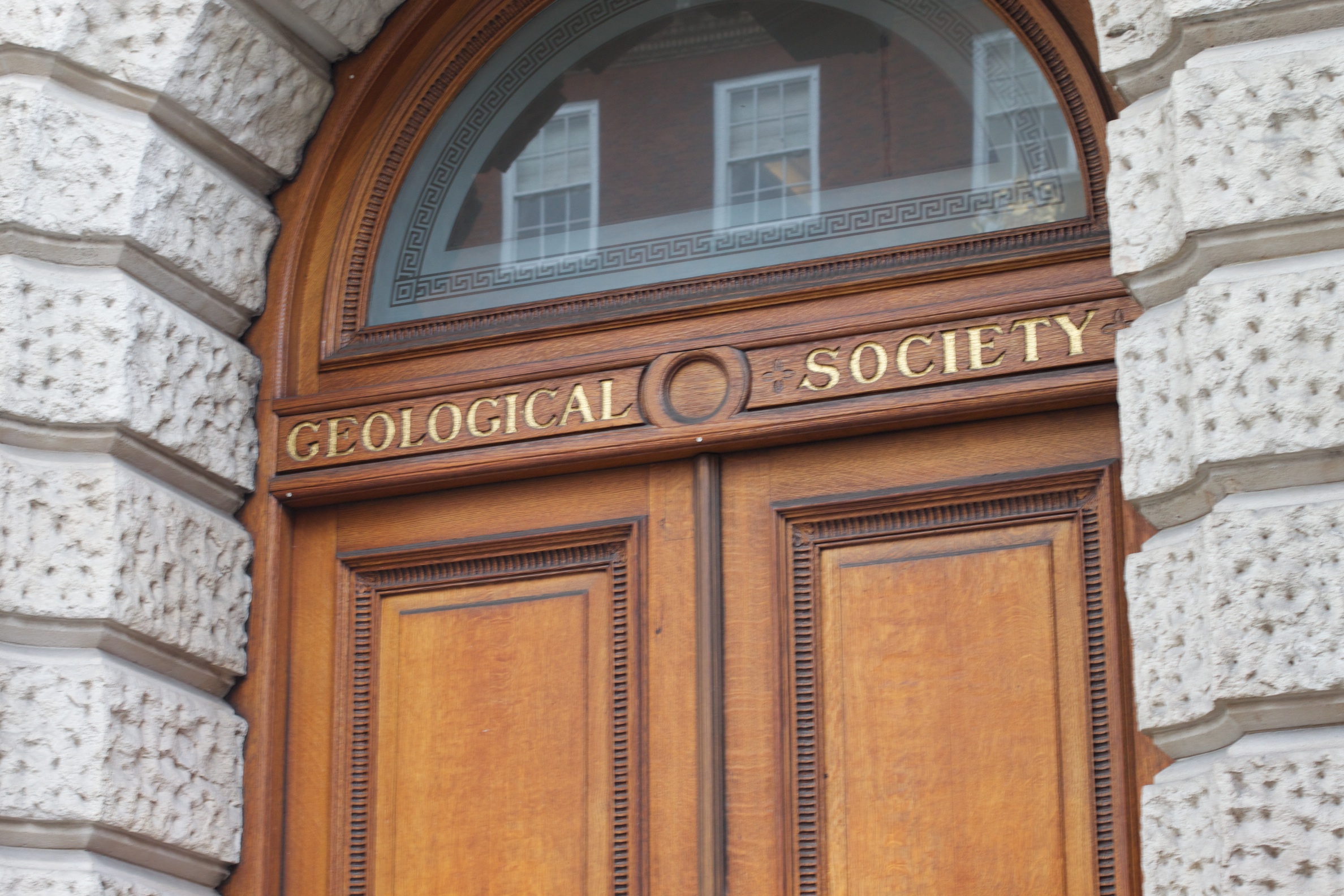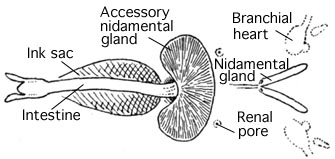|
Mary Anning
Mary Anning (21 May 1799 – 9 March 1847) was an English fossil collector, fossil trade, dealer, and palaeontologist. She became known internationally for her discoveries in Jurassic marine fossil beds in the cliffs along the English Channel at Lyme Regis in the county of Dorset, South West England, Southwest England. Anning's findings contributed to changes in scientific thinking about prehistoric life and the Historical geology, history of the Earth. Anning searched for fossils in the area's Blue Lias and Charmouth Mudstone Formation, Charmouth Mudstone cliffs, particularly during the winter months when landslides exposed new fossils that had to be collected quickly before they were lost to the sea. Her discoveries included the first correctly identified ichthyosaur skeleton when she was twelve years old; the first two nearly complete plesiosaur skeletons; the first pterosaur skeleton located outside Germany; and fish fossils. Her observations played a key role in the d ... [...More Info...] [...Related Items...] OR: [Wikipedia] [Google] [Baidu] |
Golden Cap
Golden Cap is a hill and cliff situated on the English Channel coast between Bridport and Charmouth in Dorset, England. At , it is arguably the highest point near the south coast of Great Britain (although the highest point is set back some from the coastline) and is visible for tens of miles along the coastline. It is accessible via a coastal footpath from Seatown, and takes around 40 minutes to reach the summit. The hill is owned by the National Trust for Places of Historic Interest or Natural Beauty, National Trust and forms part of the Jurassic Coast, a World Heritage Site. The base of the cliff is covered with large boulders, and is popular with fossil collectors. Storms have previously exposed fossilised ammonites and belemnites in the Blue Lias base. The name derives from the distinctive outcropping of golden greensand (geology), greensand rock present at the very top of the cliff. Behind the cliff is Langdon Wood, a small wood of mainly Corsican Pine, planted in the ... [...More Info...] [...Related Items...] OR: [Wikipedia] [Google] [Baidu] |
Pterosaur
Pterosaurs are an extinct clade of flying reptiles in the order Pterosauria. They existed during most of the Mesozoic: from the Late Triassic to the end of the Cretaceous (228 million to 66 million years ago). Pterosaurs are the earliest vertebrates known to have evolved powered flight. Their wings were formed by a membrane of skin, muscle, and other tissues stretching from the ankles to a dramatically lengthened fourth finger. There were two major types of pterosaurs. Basal pterosaurs (also called 'non-pterodactyloid pterosaurs' or ' rhamphorhynchoids') were smaller animals with fully toothed jaws and, typically, long tails. Their wide wing membranes probably included and connected the hind legs. On the ground, they would have had an awkward sprawling posture, but the anatomy of their joints and strong claws would have made them effective climbers, and some may have even lived in trees. Basal pterosaurs were insectivores or predators of small vertebrates. Later pte ... [...More Info...] [...Related Items...] OR: [Wikipedia] [Google] [Baidu] |
Carl Gustav Carus
Carl Gustav Carus (3 January 1789 – 28 July 1869) was a German physiologist and painter, born in Leipzig, who played various roles during the Romanticism, Romantic era. A friend of the writer Johann Wolfgang Goethe, he was a many-sided man: a doctor, a naturalist, a scientist, a psychologist, and a landscape painter who studied under Caspar David Friedrich. Life and work In 1811 he graduated as a doctor of medicine and a doctor of philosophy. In 1814 he was appointed professor of obstetrics and director of the maternity clinic at the teaching institution for medicine and surgery in Dresden. He wrote on art theory. From 1814 to 1817 he taught himself oil painting working under Caspar David Friedrich, a Dresden landscape painter. Subsequently, he studied under Julius Schnorr von Carolsfeld at the Oeser drawing academy. When the King of Saxony, Frederick Augustus II of Saxony, Frederick Augustus II, made an informal tour of Britain in 1844, Carus accompanied him as his personal ... [...More Info...] [...Related Items...] OR: [Wikipedia] [Google] [Baidu] |
Lyme Regis - Dorset Dot
Lyme or LYME may refer to: * Lyme disease, an infectious disease carried by ticks caused by bacteria of the genus ''Borrelia'' Places United Kingdom * Lyme, an alternative name of Lyme Handley, a civil parish in Cheshire ** Lyme Park, an estate in Cheshire * Lyme Regis, a town in Dorset commonly known as Lyme ** Lyme Bay, an area of the English Channel * Lyme Brook, tributary stream of the River Trent, Staffordshire * Forest of Lyme, a historic area of forest covering parts of Cheshire, Derbyshire, and Staffordshire United States * Lyme, Connecticut, a town in southeastern Connecticut, the namesake of Lyme disease ** Old Lyme, Connecticut, a neighboring town ** East Lyme, Connecticut, a neighboring town * Lyme, New Hampshire, a town in western New Hampshire * Lyme, New York, a town in New York along the Lake Ontario shoreline * Lyme Township, Huron County, Ohio, a small town in northern Ohio Other places * Lyme Park, Gauteng, a suburb of Johannesburg, South Africa Ships ... [...More Info...] [...Related Items...] OR: [Wikipedia] [Google] [Baidu] |
Journal Of Natural History
The ''Journal of Natural History'' is a scientific journal published by Taylor & Francis focusing on entomology and zoology. The journal was established in 1841 under the name ''Annals and Magazine of Natural History'' (''Ann. Mag. Nat. Hist.'') and obtained its current title in 1967. The journal was formed by the merger of '' Loudon and Charlesworth's Magazine of Natural History'' (1828–1840) and the ''Annals of Natural History'' (1838–1840; previously the ''Magazine of Zoology and Botany'', 1836–1838). In September 1855, the ''Annals and Magazine of Natural History'' published "On the Law which has Regulated the Introduction of New Species", a paper which Alfred Russel Wallace had written while working in the state of Sarawak on the island of Borneo in February of that year. [...More Info...] [...Related Items...] OR: [Wikipedia] [Google] [Baidu] |
Anatomy
Anatomy () is the branch of morphology concerned with the study of the internal structure of organisms and their parts. Anatomy is a branch of natural science that deals with the structural organization of living things. It is an old science, having its beginnings in prehistoric times. Anatomy is inherently tied to developmental biology, embryology, comparative anatomy, evolutionary biology, and phylogeny, as these are the processes by which anatomy is generated, both over immediate and long-term timescales. Anatomy and physiology, which study the structure and function of organisms and their parts respectively, make a natural pair of related disciplines, and are often studied together. Human anatomy is one of the essential basic sciences that are applied in medicine, and is often studied alongside physiology. Anatomy is a complex and dynamic field that is constantly evolving as discoveries are made. In recent years, there has been a significant increase in the use of ... [...More Info...] [...Related Items...] OR: [Wikipedia] [Google] [Baidu] |
Duria Antiquior
''Duria Antiquior, a more ancient Dorset'' is the first pictorial representation of a scene of prehistoric life based on evidence from fossil reconstructions, a genre now known as paleoart. The first version was a watercolour painted in 1830 by the English geologist Henry De la Beche based on fossils found in Lyme Regis, Dorset, mostly by the professional fossil collector Mary Anning. De la Beche had the professional artist Georg Scharf produce lithographic prints based on the painting, which he sold to friends to raise money for Anning's benefit. It was the first depiction of a scene from deep time to see even limited publication. The print was used for educational purposes and widely circulated in scientific circles; it influenced several other such depictions that began to appear in scientific and popular literature. Several later versions were produced. Origins By 1830 Mary Anning was well known to the leading British geologists and fossil collectors for her ability t ... [...More Info...] [...Related Items...] OR: [Wikipedia] [Google] [Baidu] |
Henry De La Beche
Sir Henry Thomas De la Beche KCB, FRS (10 February 179613 April 1855) was an English geologist and palaeontologist, the first director of the Geological Survey of Great Britain, who helped pioneer early geological survey methods. He was the first President of the Palaeontographical Society. He was also a slave plantation owner in Jamaica. Biography De la Beche was born in Welbeck Street, Cavendish Square, London. He was the only son of Thomas De la Beche (1755–1801) and his wife, Elizabeth. The family name was originally Beach, but his father changed it to create a fictional connection with the medieval Barons De la Beche of Aldworth, Berkshire. Thomas (Henry's father) served as a brevet major (later lieutenant-colonel) in the Norfolk Yeomanry, a regiment of fencibles in the British Army, and his father was a slave owner with an estate in Jamaica. In 1800 the family travelled to the plantation in Jamaica when Thomas inherited the estate and Thomas died there in the fo ... [...More Info...] [...Related Items...] OR: [Wikipedia] [Google] [Baidu] |
Geological Society Of London
The Geological Society of London, known commonly as the Geological Society, is a learned society based in the United Kingdom. It is the oldest national geological society in the world and the largest in Europe, with more than 12,000 Fellows. Fellows are entitled to the postnominal FGS (Fellow of the Geological Society), over 2,000 of whom are Chartered Geologists (CGeol). The Society is a registered charity, no. 210161. It is also a member of the Science Council, and is licensed to award Chartered Scientist to qualifying members. The mission of the society is: "Making geologists acquainted with each other, stimulating their zeal, inducing them to adopt one nomenclature, facilitating the communication of new facts and ascertaining what is known in their science and what remains to be discovered". History The Society was founded on 13 November 1807 at the Freemasons' Tavern, Great Queen Street, in the Covent Garden district of London. It was partly the outcome of a previou ... [...More Info...] [...Related Items...] OR: [Wikipedia] [Google] [Baidu] |
Cephalopod
A cephalopod is any member of the molluscan Taxonomic rank, class Cephalopoda (Greek language, Greek plural , ; "head-feet") such as a squid, octopus, cuttlefish, or nautilus. These exclusively marine animals are characterized by bilateral symmetry, bilateral body symmetry, a prominent head, and a set of cephalopod arm, arms or tentacles (muscular hydrostats) modified from the primitive molluscan foot. Fishers sometimes call cephalopods "inkfish", referring to their common ability to squirt Cephalopod ink, ink. The study of cephalopods is a branch of malacology known as teuthology. Cephalopods became dominant during the Ordovician period, represented by primitive nautiloids. The class now contains two, only distantly related, Extant taxon, extant subclasses: Coleoidea, which includes octopuses, squid, and cuttlefish; and Nautiloidea, represented by ''Nautilus (genus), Nautilus'' and ''Allonautilus''. In the Coleoidea, the molluscan shell has been internalized or is absent, where ... [...More Info...] [...Related Items...] OR: [Wikipedia] [Google] [Baidu] |
Ink Sac
An ink sac is an anatomical feature that is found in many cephalopod mollusks used to produce the defensive cephalopod ink. With the exception of nocturnal and very deep water cephalopods, all Coleoidea (squid, octopus and cuttlefish) which dwell in light conditions have an ink sac, which can be used to expel a cloud of dark ink in order to confuse predators. The ink sac is a muscular bag which originated as an extension of the hind gut; it is a modified hypobranchial gland.Nair, J.R., D. Pillai, S.M. Joseph, P. Gomathi, P.V. Senan & P.M. Sherief (2011). ''Indian Journal of Geo-Marine Sciences'' 40(1): 13–27. It lies beneath the gut and opens into the anus, into which its contents – almost pure melanin – can be squirted; its proximity to the base of the funnel means that the ink can be distributed by ejected water as the cephalopod uses its jet propulsion. The ejected cloud of melanin is bound by mucus Mucus (, ) is a slippery aqueous secretion produced by, an ... [...More Info...] [...Related Items...] OR: [Wikipedia] [Google] [Baidu] |
Belemnoidea
Belemnoids are an extinct group of marine cephalopod, very similar in many ways to the modern squid. Like them, the belemnoids possessed an ink sac, but, unlike the squid, they possessed ten Cephalopod arm, arms of roughly equal length, and no tentacles. The name "belemnoid" comes from the Greek word βέλεμνον, ''belemnon'' meaning "a dart or arrow" and the Greek word είδος, ''eidos'' meaning "form". Belemnoids include Belemnitida, belemnites (which belong to the Order (biology), order Belemnitida), aulacocerids (order Aulacocerida), phragmoteuthids (order Phragmoteuthida), and diplobelids (order Diplobelida). Belemnoidea has been suggested to be paraphyletic by some authors. Occurrence Belemnoids were numerous during the Jurassic and Cretaceous periods, and their fossils are abundant in Mesozoic marine rocks, often accompanying their cousins the ammonites. The belemnoids become extinct at the end of the Cretaceous period along with the ammonites. The belemnoids' or ... [...More Info...] [...Related Items...] OR: [Wikipedia] [Google] [Baidu] |








